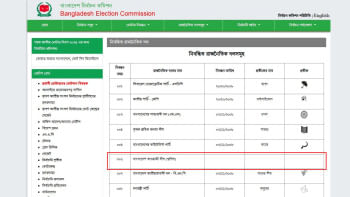Time to address women’s security, privacy at disaster shelters

The news on rape of a 14-year-old intellectually impaired girl at a disaster shelter, in Pachgachhi union of Kurigram Sadar upazila in 2018, did not make it to the headlines of major newspapers or outlets, but it offers a glimpse of the vulnerabilities women and girls face during natural disasters.
According to 30-year-old Rawshan Ara, from the same union, who was at the shelter on that very day, said most people taking shelter there gathered on the rooftop where a group of local boys were playing music on loud speakers. "One of the local boys, who targeted her [the rape victim] earlier in the day, came downstairs and raped her inside a dark room."
"Although the boy was sent to jail immediately after the scene, he was later released after the girl's grandmother was forced to settle the whole thing in exchange for money," she added.
According to climate change specialists and rights activists, even though women in a family manage almost everything during natural disasters, the plight and specific needs of women, girls and gender diverse populations remain ignored largely during and after disasters.
They are also kept out of the loop while disaster management and resilience building programmes are formulated, they also said.
According to a report produced jointly by Participatory Research Action Network and ActionAid Bangladesh and in collaboration with The United Nations Population Fund (UNFPA), among the 3.3 million people affected by this year's prolonged floods, 52 percent are women.
The double blow by Covid-19 and cyclone Amphan have made the south-western region of the country suffer even more. Out of the 2.6 million people affected by the cyclone in 19 districts, 8 lakh 20 thousand were women, including 49,316 pregnant women.
According to the report, many areas of the country's southern part remain submerged in saline water after collapse of embankments this year and the continuing exposure to saline water is causing complications to reproductive health of local women.
Besides, in flooded areas where tube wells and toilets went under water and where safe water as well as personal hygiene materials are unavailable, women have been facing severe problems in maintaining hygiene during the days of their periods.
Many women and girls living in disaster-prone areas said during early stages of flood, they can stay home by elevating beds with bricks or bamboo scaffoldings. But they have to move out to disaster shelters when the water level rises or the current grows stronger.
A number of the women from those areas -- including Barguna, Jamalpur, Kurigram, Gaibandha, Satkhira and Rangamati -- also said reaching the shelters do not end their sufferings as women's security is often overlooked at the shelters.
Based on her past experience of harassments such as catcalling, indecent comments or obscene gestures made by delinquent youths and men during her stay at a disaster shelter, Rawshan Ara took shelter at her relative's house in Kurigram Sadar upazila this year, when her house was flooded.
"There was no lighting in the shelter and men and women from more than 10 different families were crammed in one single room. We stayed up the entire night to keep ourselves safe from eyeballing of men.
"After that rape incident, many parents, including my mother, have become reluctant to take their young female family members to the shelters," she explained.
Khodeja Begum, from Dewanganj in Jamalpur, said mothers feel insecure for their daughters at disaster shelters.
Since the shelters had no privacy for women or girls and lacked adequate toilet or shower facilities for all residents, men whistled and made obscene gestures at them while she and her 11-year-old daughter ate, slept or took showers there.
"My daughter got very frustrated this time. She stopped eating and sat in a corner during the entire stay," she added.
Without adequate toilets and private areas designated for women, it is extremely difficult for women, especially the ones with disabilities, to maintain hygiene during their periods and breastfeed their infants at the disaster shelters.
In most of the shelters, around 50 families share two toilets. And when those are occupied, people have no choice but go far on a boat to relieve themselves in the water.
"This is so common [at the shelters] that we would lower our food or drink intake so we wouldn't need to defecate in the day. But then again, there is no security for women at night, when men would attempt to forcibly grab girls on way to the unlit toilets or deliberately occupy the boats," said a girl, who is a college student in Pathorghata of Barguna.
Absence of designated areas to ensure privacy of women and limited toilet facilities at the disaster shelters are leading to infection and skin diseases as women are unable change wet rags during days of menstruation, said Khodeja from Dewanganj.
While speaking at a webinar titled "Women's vulnerabilities in Emergency: unheard voices", organised last month by ActionAid Bangladesh, Atiqul Huq, director general of Department of Disaster Management (DDM), said they prepared a draft action plan for disaster management for the years 2021 to 2025.
In the plan, they are making efforts to involve women, children and differently abled population in disaster management, he said, adding, "A separate corner for women is being set up at new cyclone shelters. Keeping the needs of women and persons with disabilities in mind, the DDM is going to purchase 60 rescue boats soon."
ActionAid Bangladesh Country Director Farah Kabir at the webinar stressed the need for establishing women-friendly disaster shelters that would be managed by women and arranging psychosocial counselling for women at the shelters.

 For all latest news, follow The Daily Star's Google News channel.
For all latest news, follow The Daily Star's Google News channel. 



Comments